There are many good reasons to go, or return, to Jordan. The first is undoubtedly Petra, one of the Seven Wonders of the World, which together with the other five UNESCO sites of Umm Ar- Rasas, Wadi Rum, Al-Maghtas, Al-Sat, Qusayr Amra is among the country’s top attractions. The six World Heritage Sites, along with the Dead Sea, are definitely the must-see stops on a trip to Jordan. But there is so much more to visit and also to do, “smaller” realities that the government is investing in to promote and make the country even more attractive and competitive in the international market. What? Experiences and activities related to the culture, art, food and identity of this country that before being a place to visit is a place to live among the people. Everywhere you go, from the gas station, to the market or at an archaeological site you will find people on the street who will say "welcome."
Jordan, the pearl of the Middle East, is considered a safe tourist destination despite its proximity to Israel, Syria and the Gaza Strip that might make one fear otherwise. The government goes to great lengths to constantly take security measures to protect visitors, and there is no perception in the country of what are the tensions across the border. Because of this, but also because of the many sightseeing options it offers, it is a suitable destination for all types of travelers: from families with children, to single women, to single travelers with a desire for adventure or groups of friends.
There are many ways to organize your departure: those who seek ease in travel can turn to one of the many Tour Operators in Italy who offer safe trips for all types of travelers or who build vacation proposals according to the time available and specific requests. Or, for the more adventurous, the destination is easy and safe enough to allow even do-it-yourself organization. Direct flights from Italy make access from the capital of Amman easy.
Amman, besides being the capital of Jordan, with its Citadel is one of the country’s attractions. A metropolis of more than 4 million people, founded on seven hills, the Citadel in the Jabal al Qala’a hill is its historic heart; the archaeological part is a must-see. Inhabited since the Neolithic period, it is considered among the oldest continuously inhabited places in the world, with numerous empires succeeding one another over time. Visiting the Citadel one notices three great civilizations: the Roman Era with the Temple of Hercules, the Byzantine Era with the Byzantine Church, and the Era of the Great Caliphates with the Umayyad Palace known for its imposing dome. On another hill, from the Citadel, you can see the Roman Theater: a 2nd-century stone amphitheater used for occasional events and seating up to 6,000 people. Among the white buildings in the distance a special feature are the frescoes on the walls: of all of them, to the left of the street, look for the one that depicts a man with bricks on his head with your eyes: it is a tribute to all the workers who worked on the renovation.
“Modern” Amman, on the other hand, is just over 100 years old. It is a vibrant city that mixes ancient history with culture and a cosmopolitan modernity. If you move around on foot there are very steep stairways that cut through the avenues and twist into the hills from where there is always a beautiful view of corners of the City. In one of these stairways in the hillside exactly opposite the amphitheater is the “Amman panorama Art Gallery”: fortunately this old house instead of being used as a restaurant or hotel has been used as a gallery where they exhibit, sell and meet local artists. It has a terrace on the top floor with a wonderful view of the Roman Theater, which remains in the hill opposite.
The Jordanian capital is a paradise for Souk lovers. Rainbow Street is a rather touristy part, but absolutely pleasant to visit; it is the liveliest part, of the nightlife especially on weekends. King Abdullah Mosque is the only mosque in the city that non-Muslims can visit; to enter, men must wear long pants and women must cover their arms, head and legs ( abayas are available at the entrance). Completed in 1989, it is unmistakable for its blue dome; inside, some of the finery is Carrara marble. Amman and its d’introns deserve at least a three-day visit.
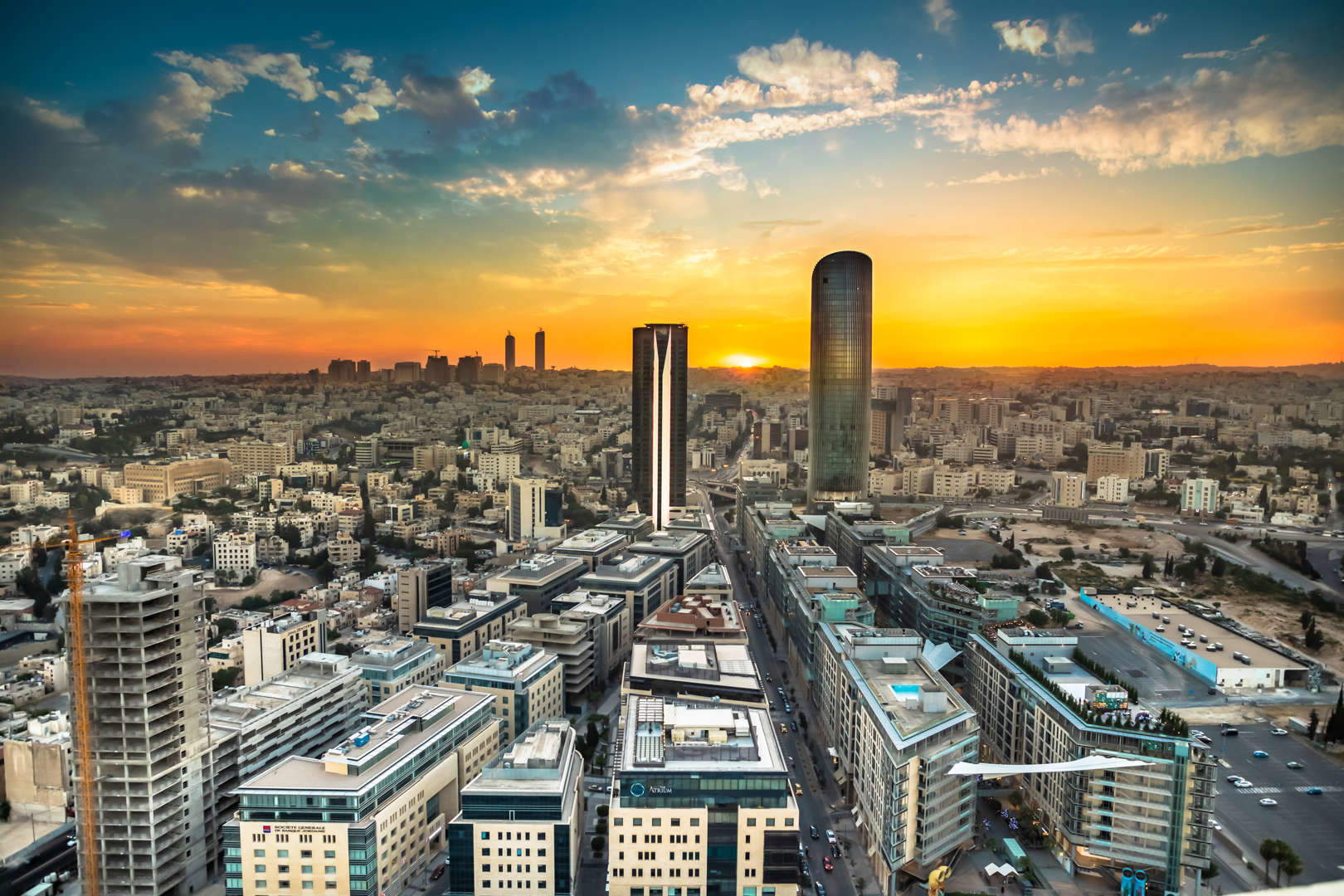
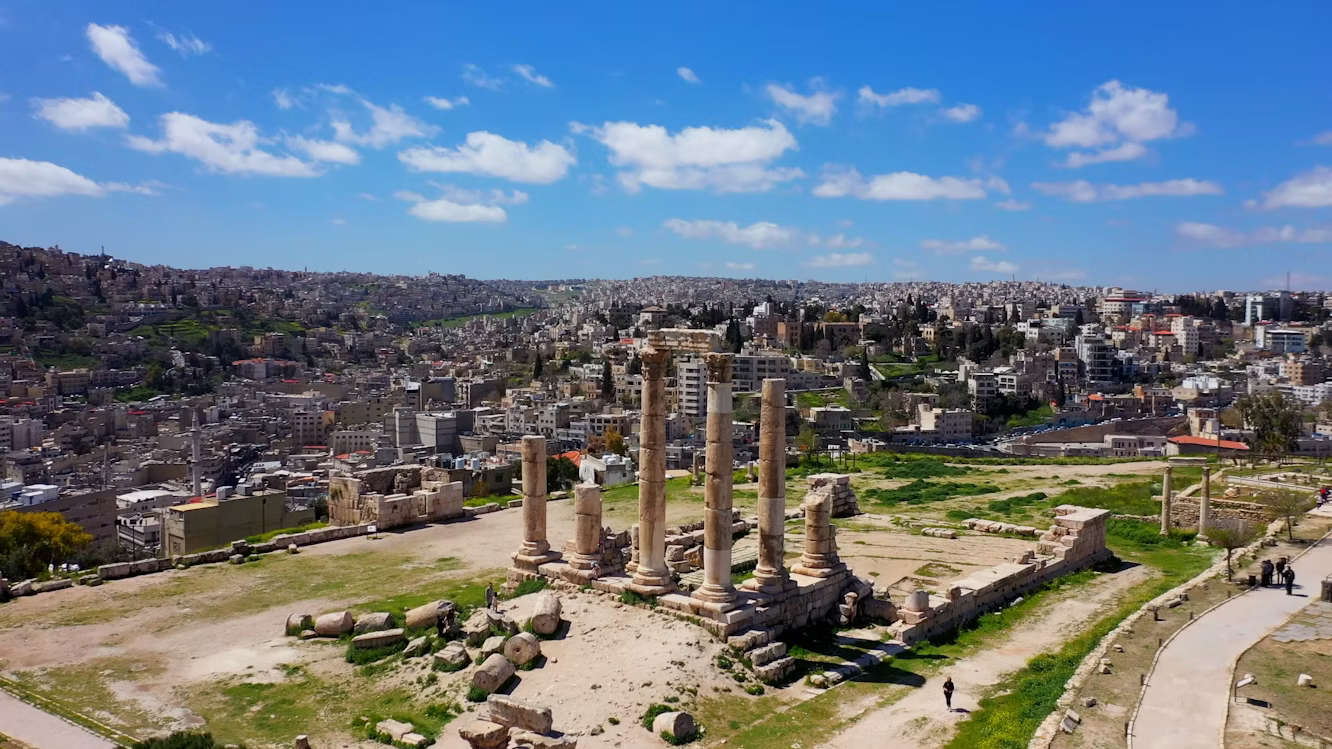
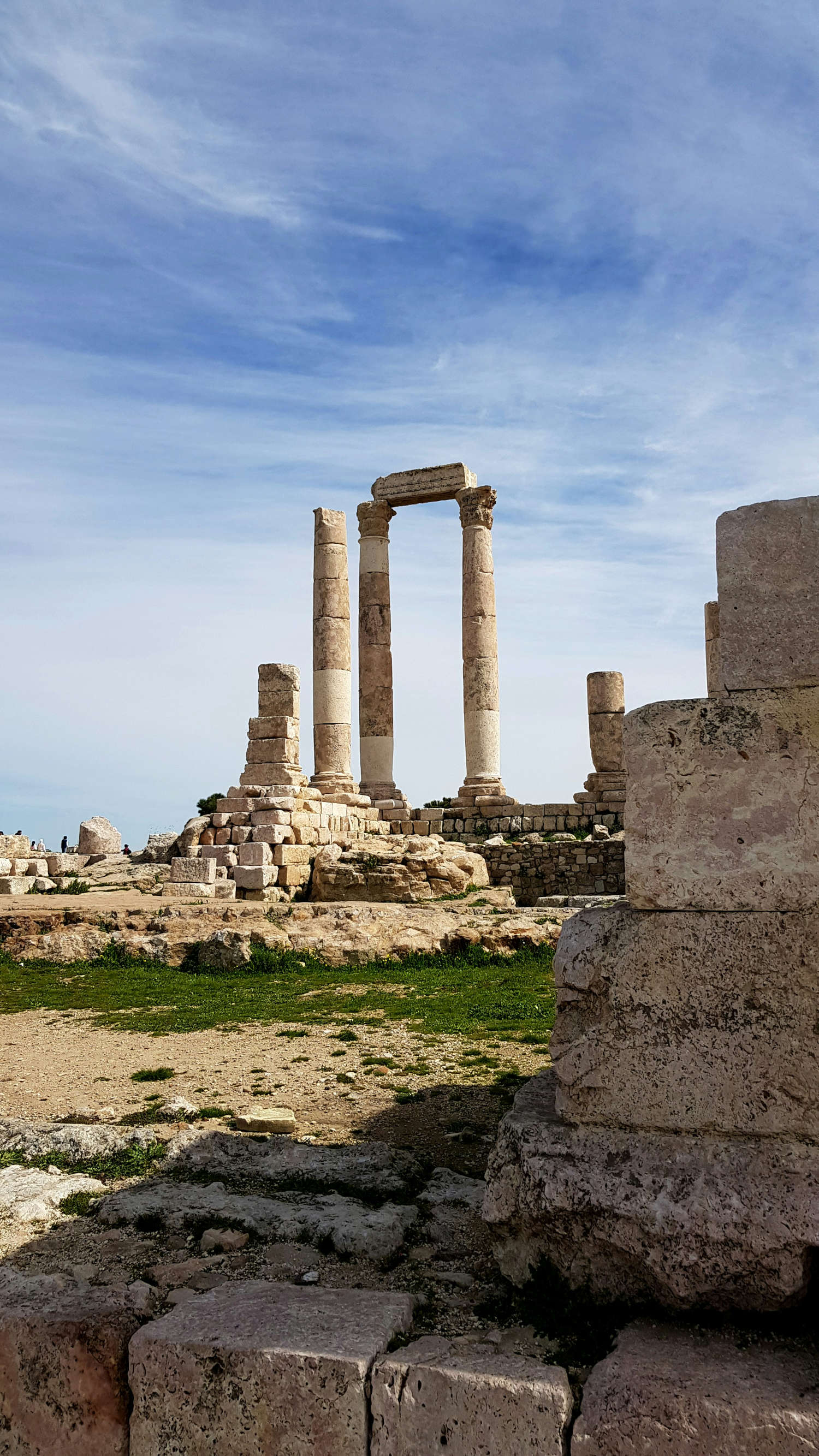
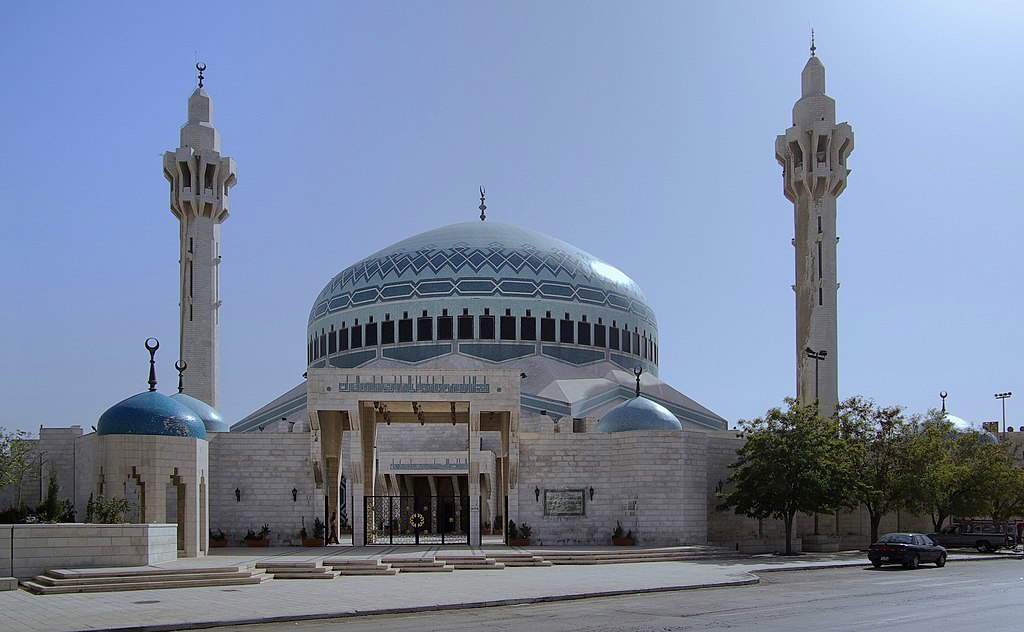
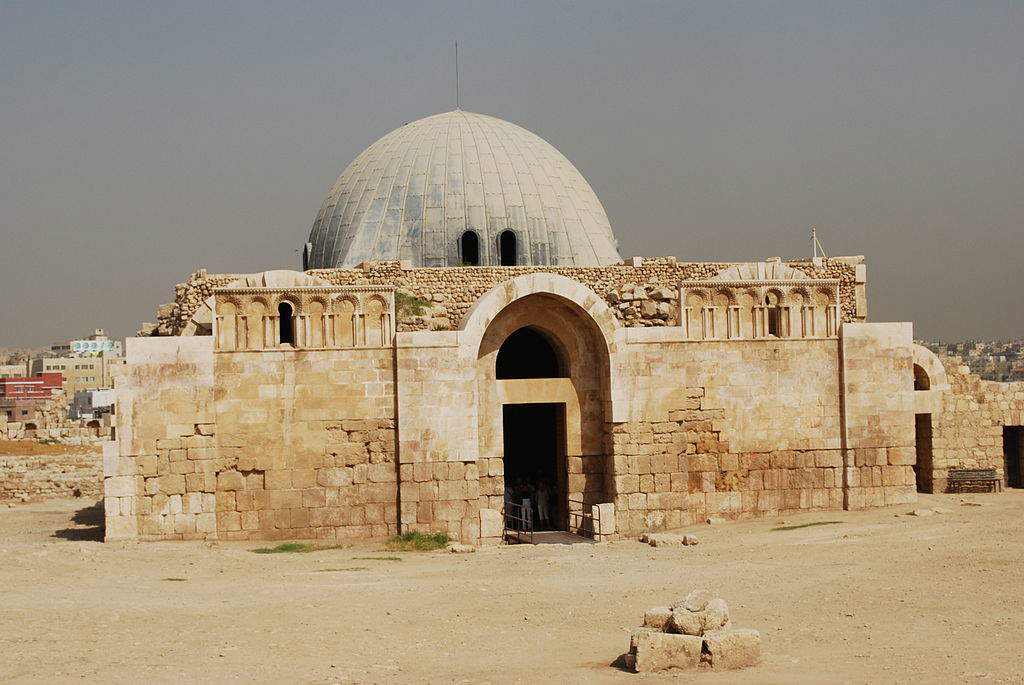
A very nice place to reach in the day in the northern part, toward the border with Syria and Lebanon, is Umm Qais, the ancient Gadara. You can see Tiberias across the lake, the river marks the border. The curiosity: it is 40 meters below sea level. It is the Golan Heights. The archaeological site of Umm Qais, what was once the city of Gadara, is a must-see. At the time it was renowned as a cultural center, perched on a hill overlooking the Jordan Valley. From the parking lot, a Roman road leads to the Ottoman village: columns, the remains of an octagonal church, what remains of a Byzantine floor, and the most exclusive Roman theater in Jordan because it is made of black basalt and seats up to 3,000 people. A marvelous panorama can be seen from here. The contrast of colors in spring is very strong: the dark stones, the yellow of the flowers, the green of the plants and the blue sky.
Umm Qais has been named by the World Tourism Organization (UNWTO) as one of the “Best Tourist Villages of 2022” in recognition of its commitment to innovation and sustainability. On this stretch there is the opportunity to experience the local culture by doing activities with Jordanian people. They are timidly entering the tourist circuits and have organized themselves to offer experiences: honey (the telling of how it is made, the fascination of the world of bees and the queen bee, but also dressing up and going among the beehives); women who work with straw and banana leaves by weaving and working everything by hand teach how to make baskets, trivets and many other things; even eating at a Home restaurant is an experience, and along this route there is one where even Rania of Jordan was a guest. For the more athletic, there is also the possibility here to ride a bicycle assisted by guides: for bike enthusiasts there are many itineraries in Jordan to ride on two wheels surrounded by enchanting landscapes.
Early the next day, set out for the Iraq Al Ameer Valley, which lies south of Amman, toward the Dead Sea. In this fairly enclosed valley there is a beautiful temple that you don’t know whether it is Nabataean, Philistine, there are many visions. It is megalithic, huge stones, lions guarding the gates. Next to the temple is a women’s association, "the women of Association Iraq Al Ameer" who were helped in setting up this association by the foundation founded at the time by Queen Nur, one of King Husayn’s wives and then by the current Queen Rania, who was very sensitive to women’s issues and to work as a form of independence and self-assertion. This community of women, work at the loom or pottery, make paper with flowers and plants, mosaic and have in addition to the workshop and a store, a place where you can eat or have tea, coffee. A very pleasant place where in late spring or summer there is a heady scent of fig milk in the air.
Next head to Al Salt, it is a really interesting little town, listed by the UNESCO World Heritage Committee on July 27, 2021 defined as a city of tolerance and urban hospitality for coexistence between Christians and Muslims. It is in a fairly deep valley that is extremely picturesque. The historic center has been almost entirely recovered. There is an Abu Jaber Museum & Salt Archaeological Museum here. Walking through the uphill streets where on either side are souks, stores, fruit and vegetable stalls, bakers, shoemakers is an experience. Walking down the steps will make you see Al Sat from different perspectives. Before returning to Amman, dining at sunset in a restaurant with a rooftop terrace will be a gift to the eyes and palate.
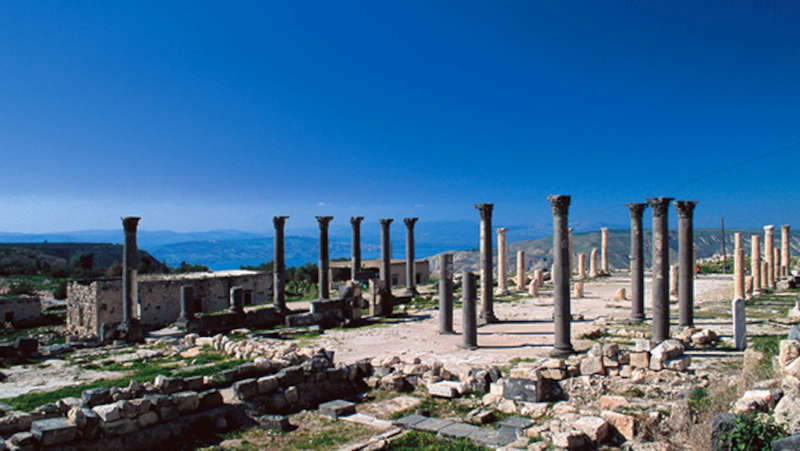
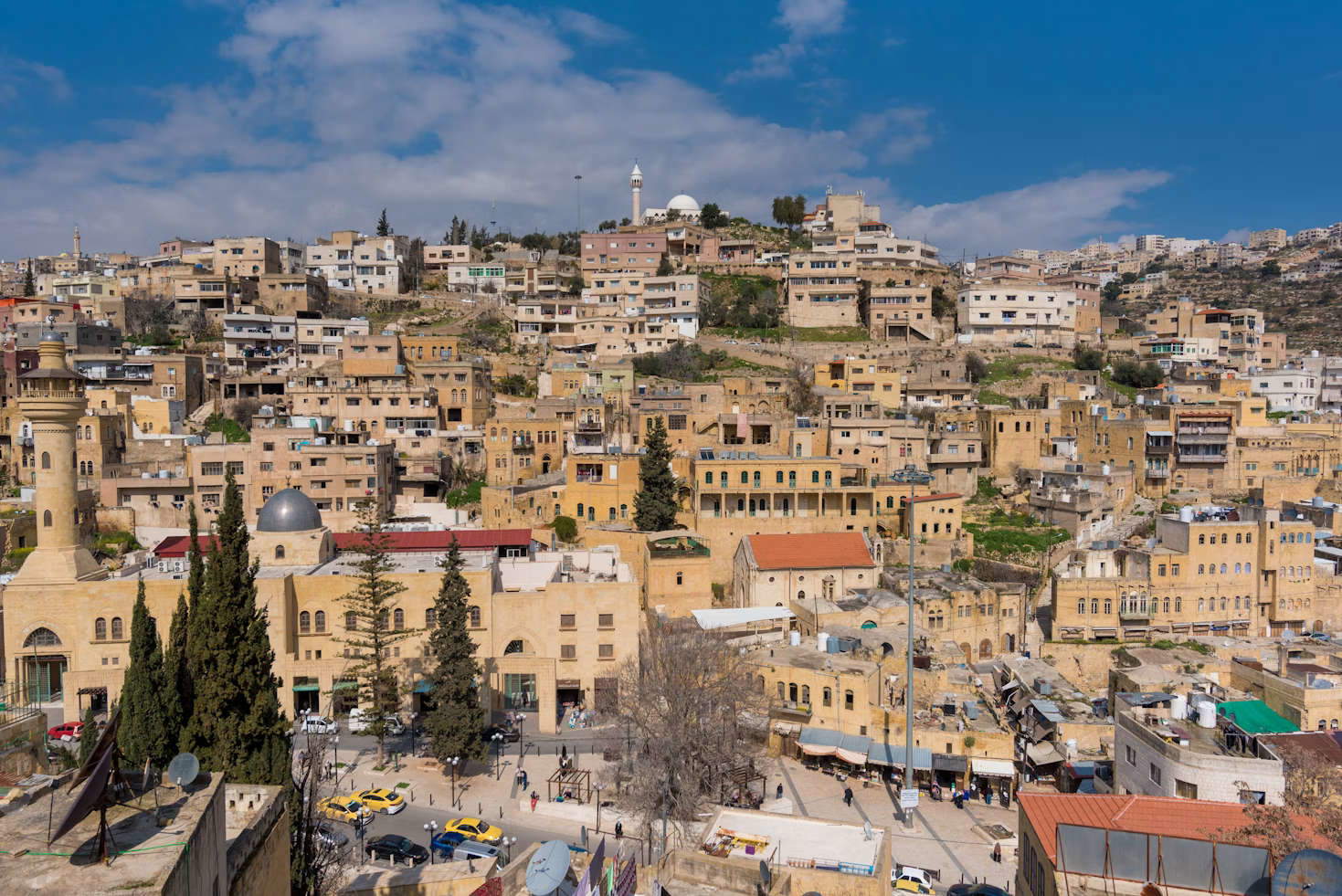
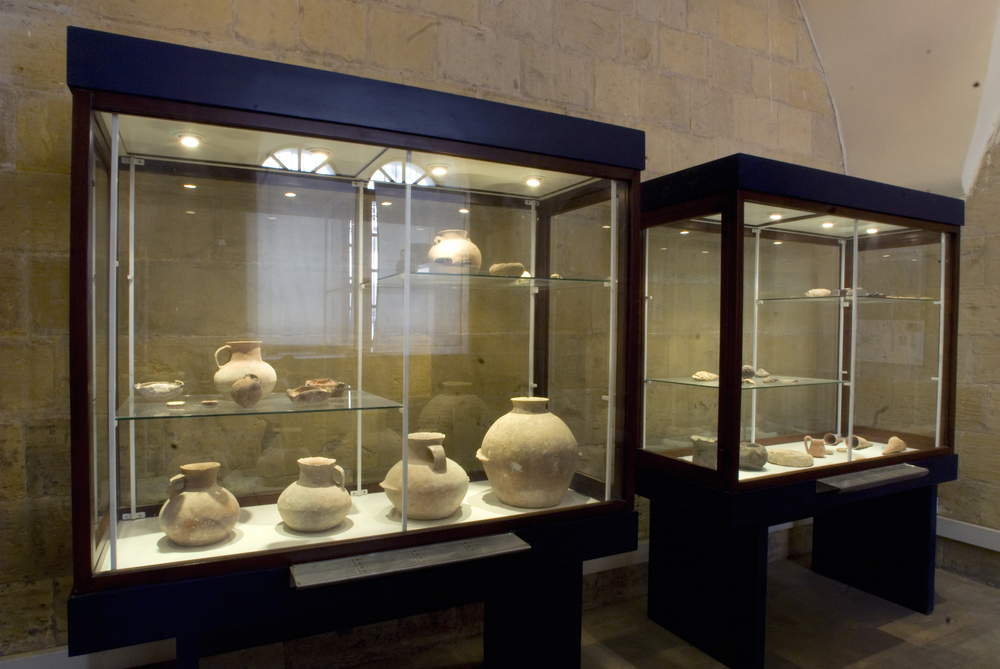
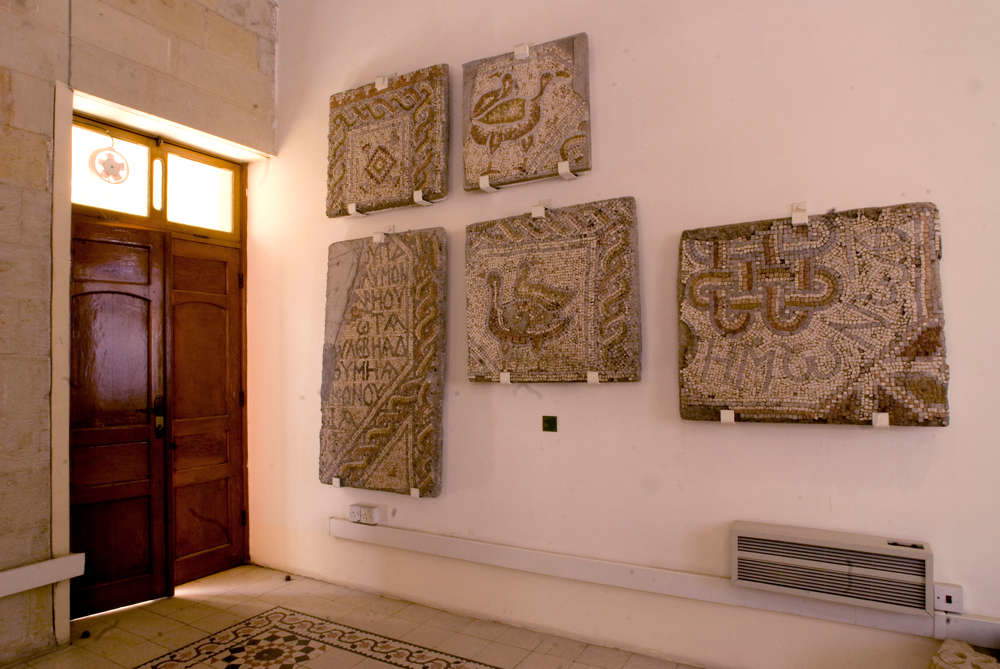
Even if you are not a skilled sportsman, a fascinating stop is certainly the Al Mujib Reserve. The entrance to the reserve is located along the road that runs along the Dead Sea. It is the lowest natural reserve in the world, generally identified with the biblical Arnon River (a river that enters the Dead Sea at about 420 meters below sea level). The rock units date back about 500 million years. Here it is possible to have a very interesting experience,canyoning in the Siq Trail, that is, walking upstream between canyon gorges, fords and easy climbs between the towering sandstone cliffs to the base of a large waterfall. The trail is about 3/4 km long (round trip), is the easiest in the reserve and can be done without a guide in a little over two hours. It is important to have the right clothing, a minimum of adventurous spirit and good water confidence.
Continuing south stop in Dana and then continue on to Petra. Dana is a small village around 1,600 meters above sea level, of Ottoman origin: coming up the road you will see the highest hotel in Jordan. Dana was once a sorting center for salt (but not only). For centuries there was a huge production of sugarcane. Dana was abandoned in 1980, but when the Dana Nature Reserve was created in the sandstone mountains, the inhabitants were given new job opportunities and, most importantly, the community was put at the center of every development project so much so that it has been completely renovated and re-inhabited since 2008. Today tourist facilities are being established, most are hostels, small room rentals or cafes. Here the local community is at the center. The houses are built of stone and wood, plastered with mud, harmonizing perfectly with the landscape. For fans of trekking or walking here the embarrassment is in the choice, in which case it is suggested to plan an overnight stay there.
Petra, besides being a UNESCO site, is one of the Seven Wonders of the World. Dating back to 300 B.C. it was the capital of the Nabataean Kingdom, then the City of the Edomites and the Romans. It developed because of its location, which made it a hub for trade, a vital stop for caravans laden with salt, spices, silks and other wares. At least two nights here will allow you to visit the site at night. At night, Petra has an indescribable charm: arriving at the Treasury from the narrow gorge called Al Siq, without daylight in a candle-studded pathway is definitely atmospheric. Sitting and enjoying the play of light with which it is illuminated is a spectacle within a spectacle. Evening openings are scheduled a few times a week.
The next morning equip yourself with comfortable shoes, hat and water to tackle the visit. You will be surprised. If you do it with a guide it will be all the more fascinating. Before you get to the Treasury, pay attention to the water drains carved into the walls, the caravans carved in low relief in one of the walls of the gorge on your left, look up and look for details of deities, the dam, terracotta drainage pipes. You will have the opportunity to walk through history to discover tombs, temples carved into the pink sandstone walls, the theater that housed up to 500 people, or the entrance to the Temple with its imposing columns. The ascent to the Monastery is slightly challenging; take it easy and enjoy the view from the top at every vantage point you have the urge to climb.
From one UNESCO site to another: after visiting Petra, set off for the Wadi Rum desert. Here, too, to make the most of the experience plan an overnight stay in one of the many Camps (tents or “bubbles/ igloos”) that, with all the comforts, will give you the opportunity to sleep in the absolute silence of the desert. Reliable 4X4 Jeep tours will let you take in the majesty and the sunset like few times in a lifetime. Among the not-to-be-missed experiences is undoubtedly the hot air balloon ride, which will make you touch the sky with your finger. The sacrifice of waking up early in the morning will definitely be repaid by floating above the desert with the slow pace of flight. The pickup is usually at 5 a.m.: seeing the sun rise at dawn as you make your way to your starting point is beautiful in itself. Upon arrival to greet you will be a hot coffee that will allow you to watch all of the hot air balloon preparation, from inflation to the rest. You will find yourself in a basket, maximum of ten people, suspended in the air looking down on the world with a suggestion that is difficult to describe in words. It will take your breath away from so much beauty. After about an hour in the air, you get your feet back on the ground: the time from waking up to landing seems to have flown by, even though in reality more than three hours have passed.
Camel riding is also a good and fun alternative for an early start to the day.
For the more romantic, or sky enthusiasts, there is the possibility of booking an experience at night after dinner to gaze at the stars with powerful telescopes(Stargazing Activity).
From the desert to the Dead Sea, unique in the world for being the lowest point on land in the world (it is 430 meters below sea level) and for being the saltiest lake in the world, so much so that it allows you to float without even an effort. The salinity rate is so high that there is no life in its waters, hence the name Dead Sea. Its mud is used for therapeutic and wellness purposes in cosmetics and spas. From here, thanks to the benefits of the mud and treatments, the return journey continues to Amman. You will be ready to return to Italy looking more dazzling than when you arrived.
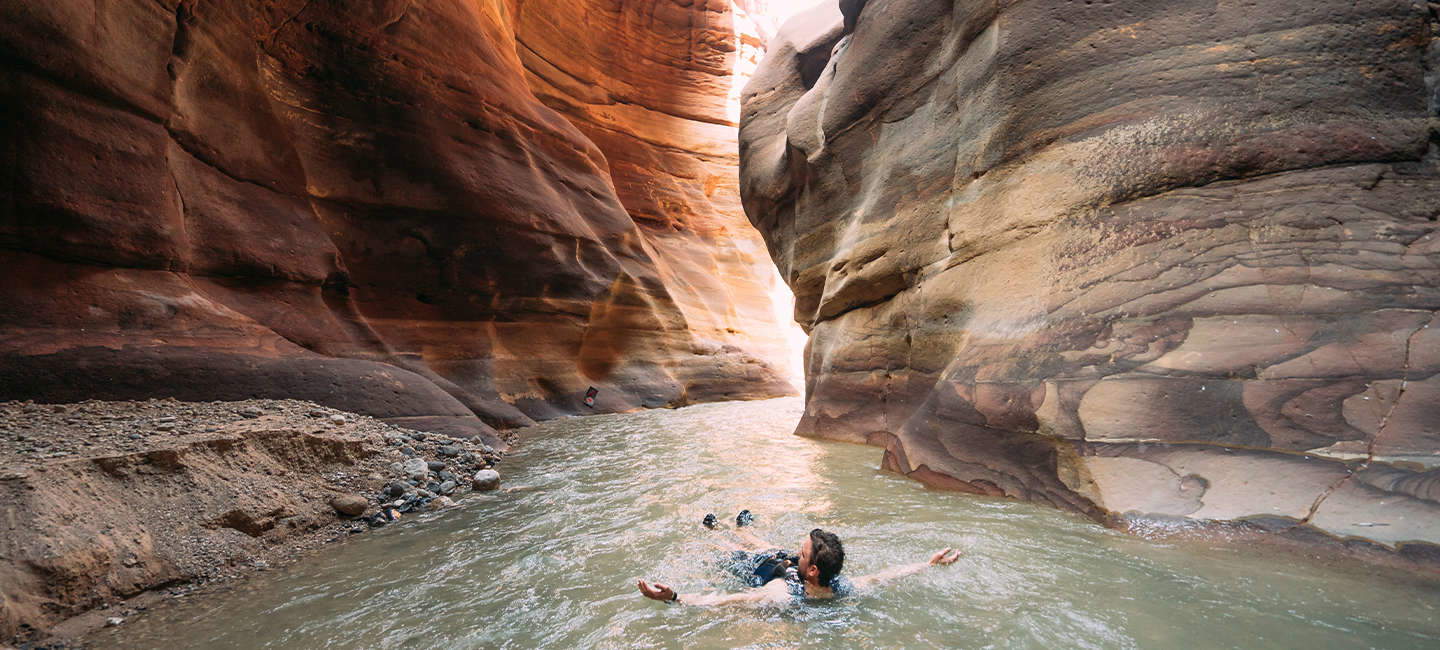
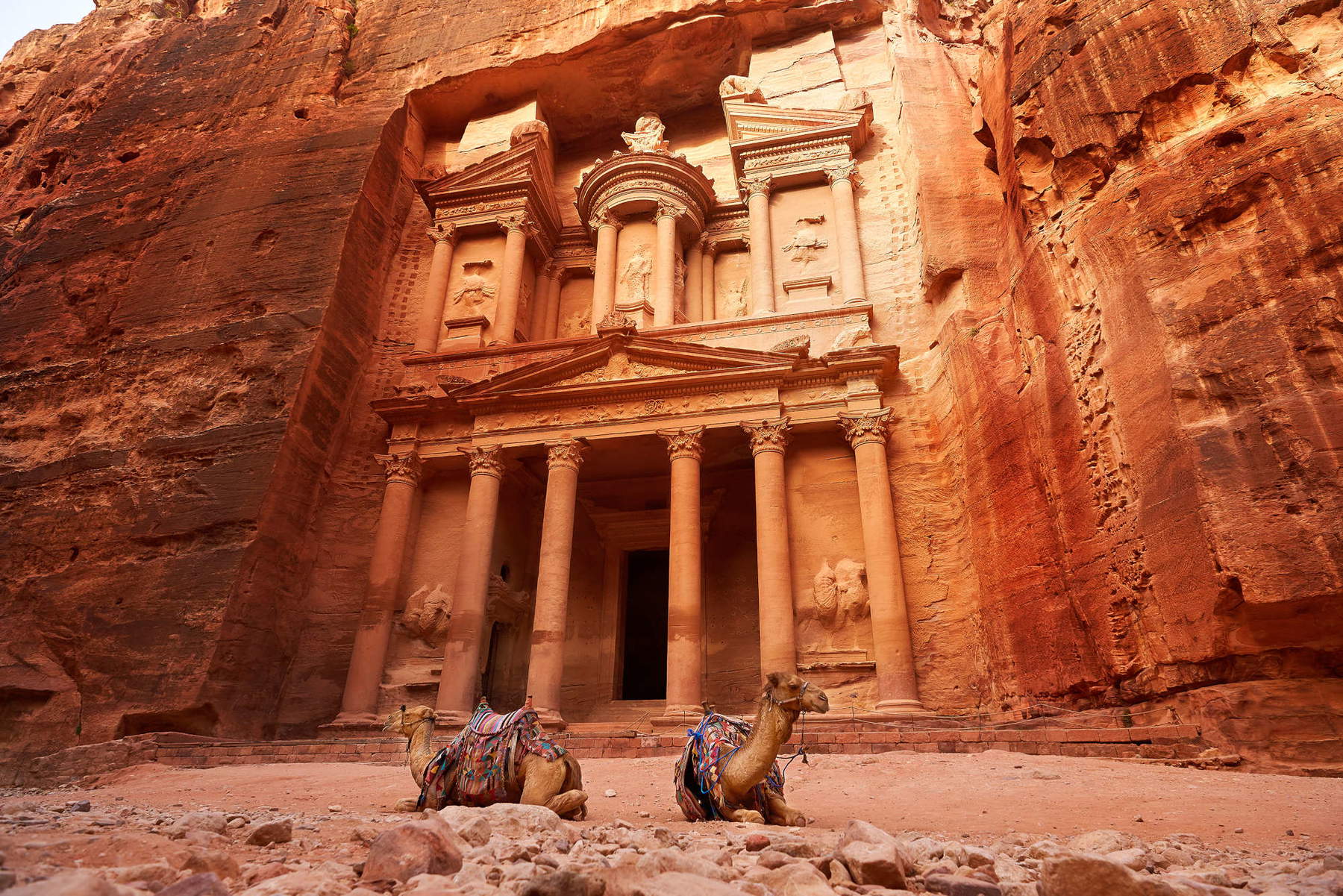
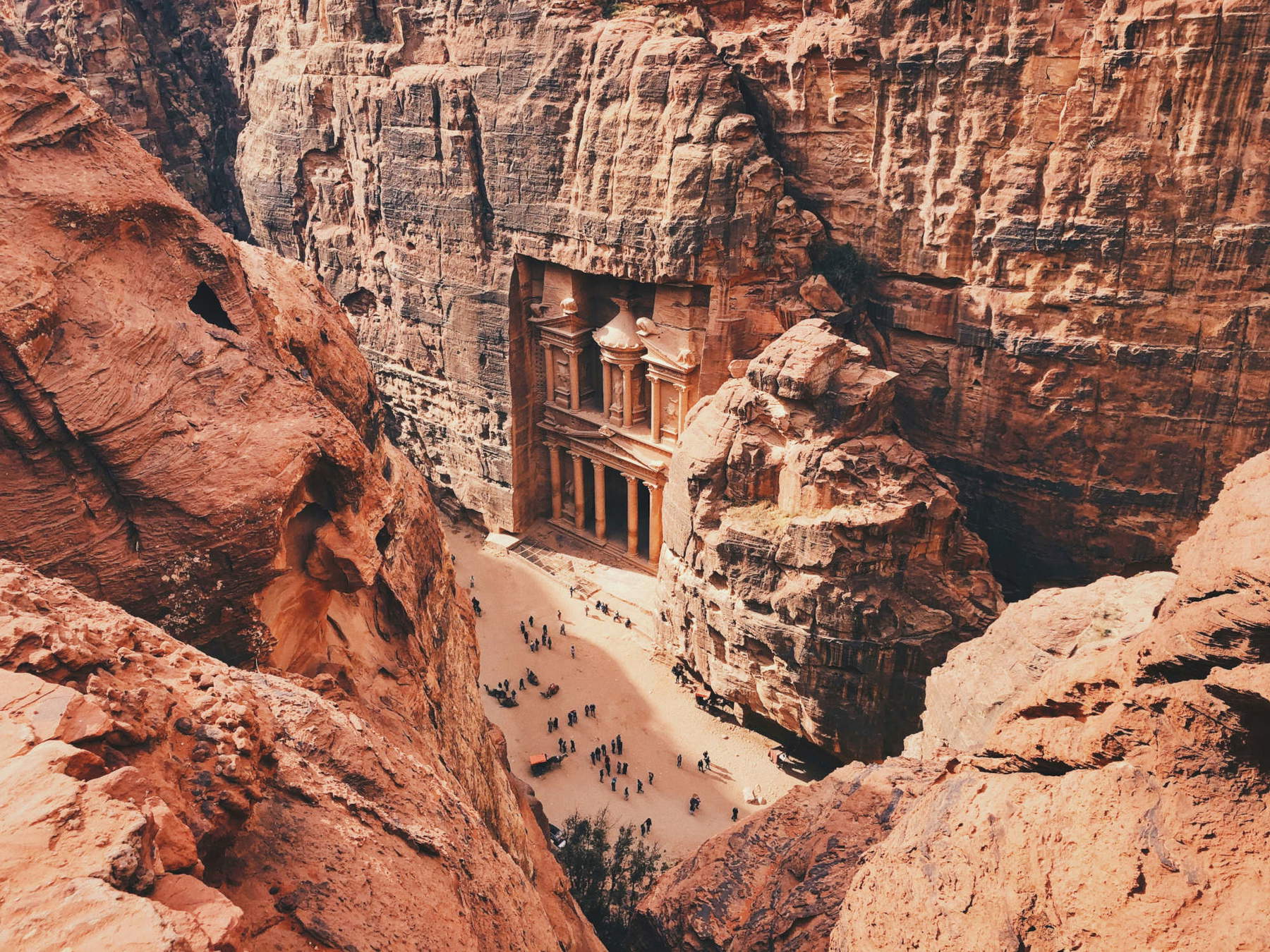

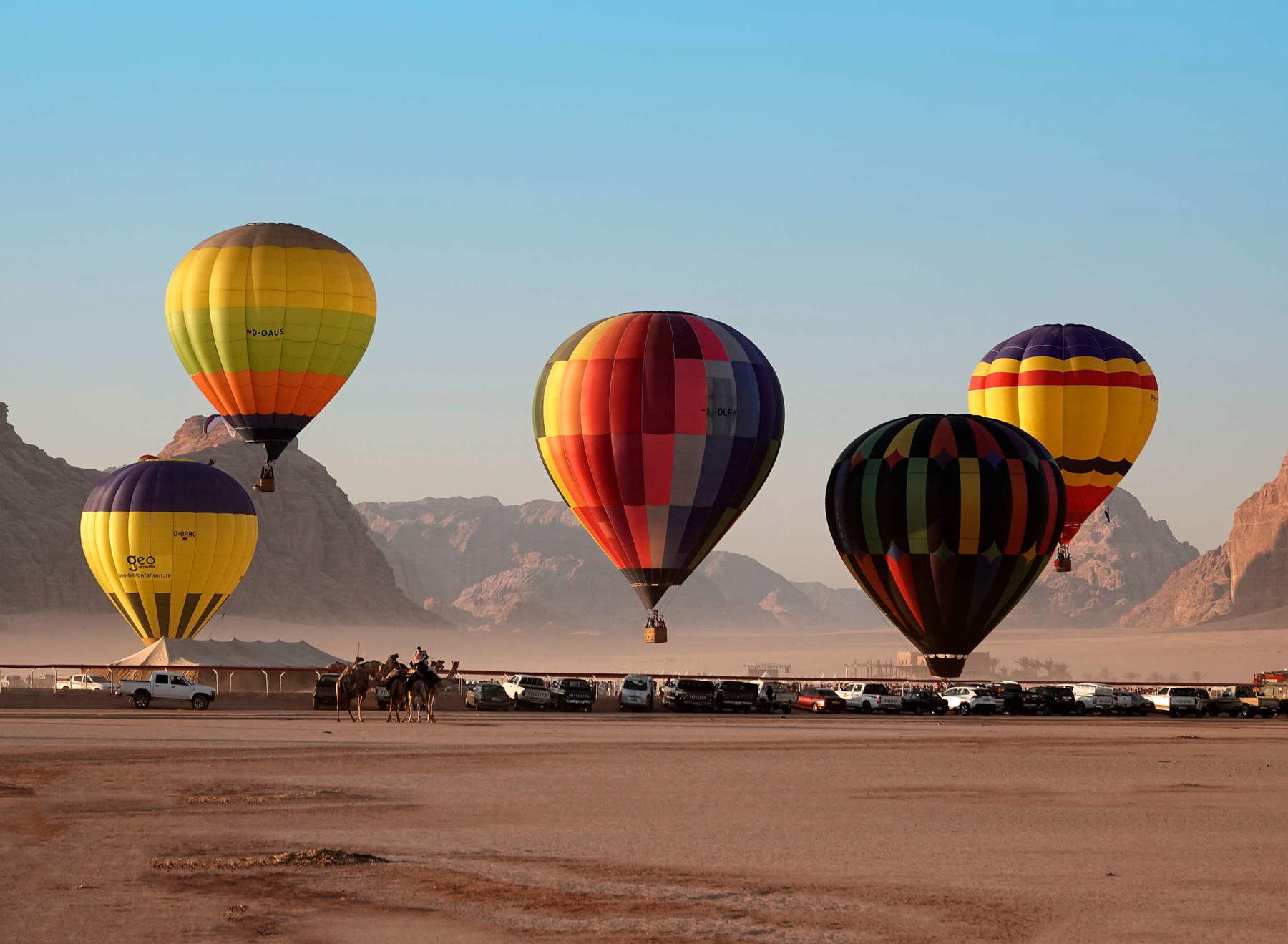
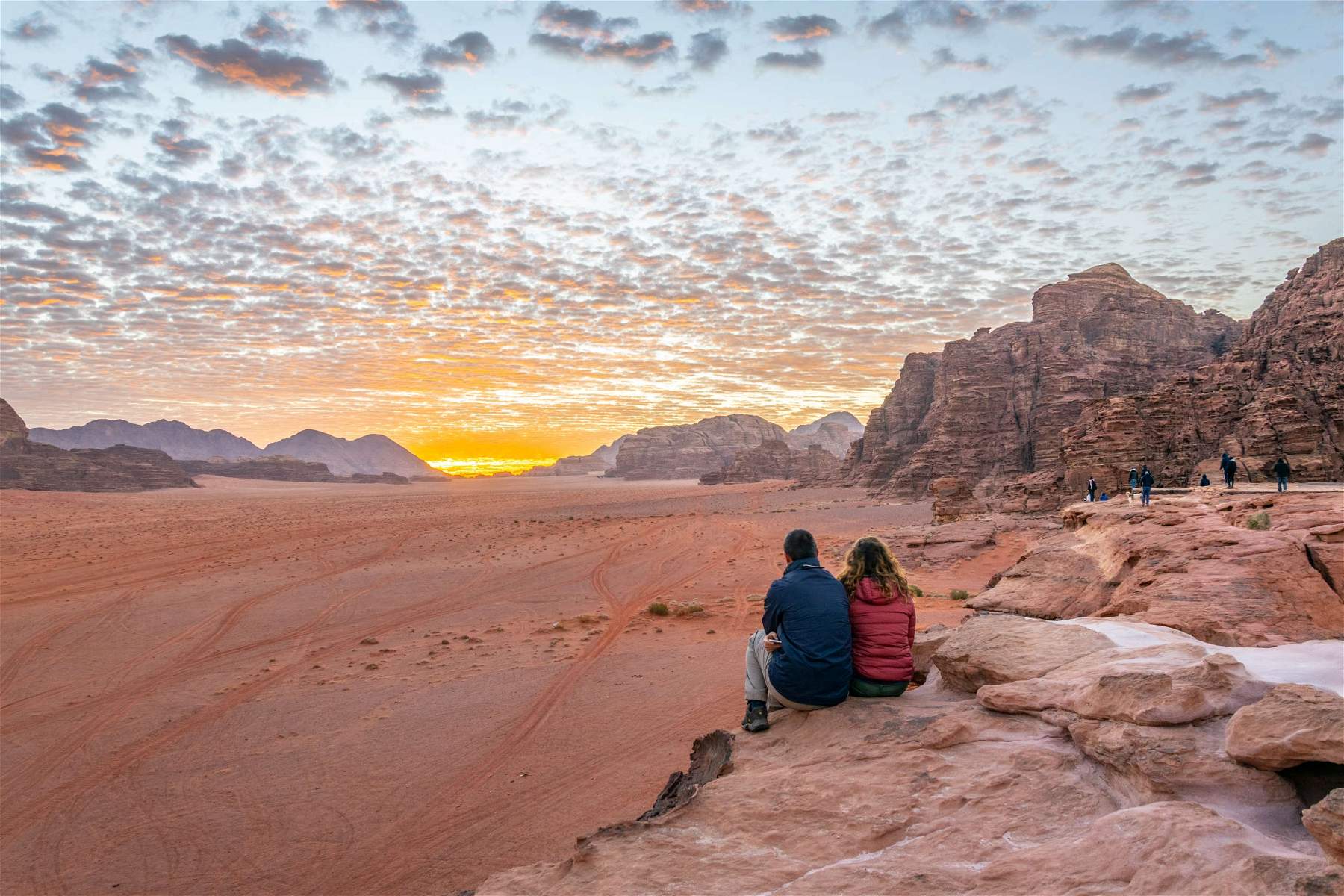
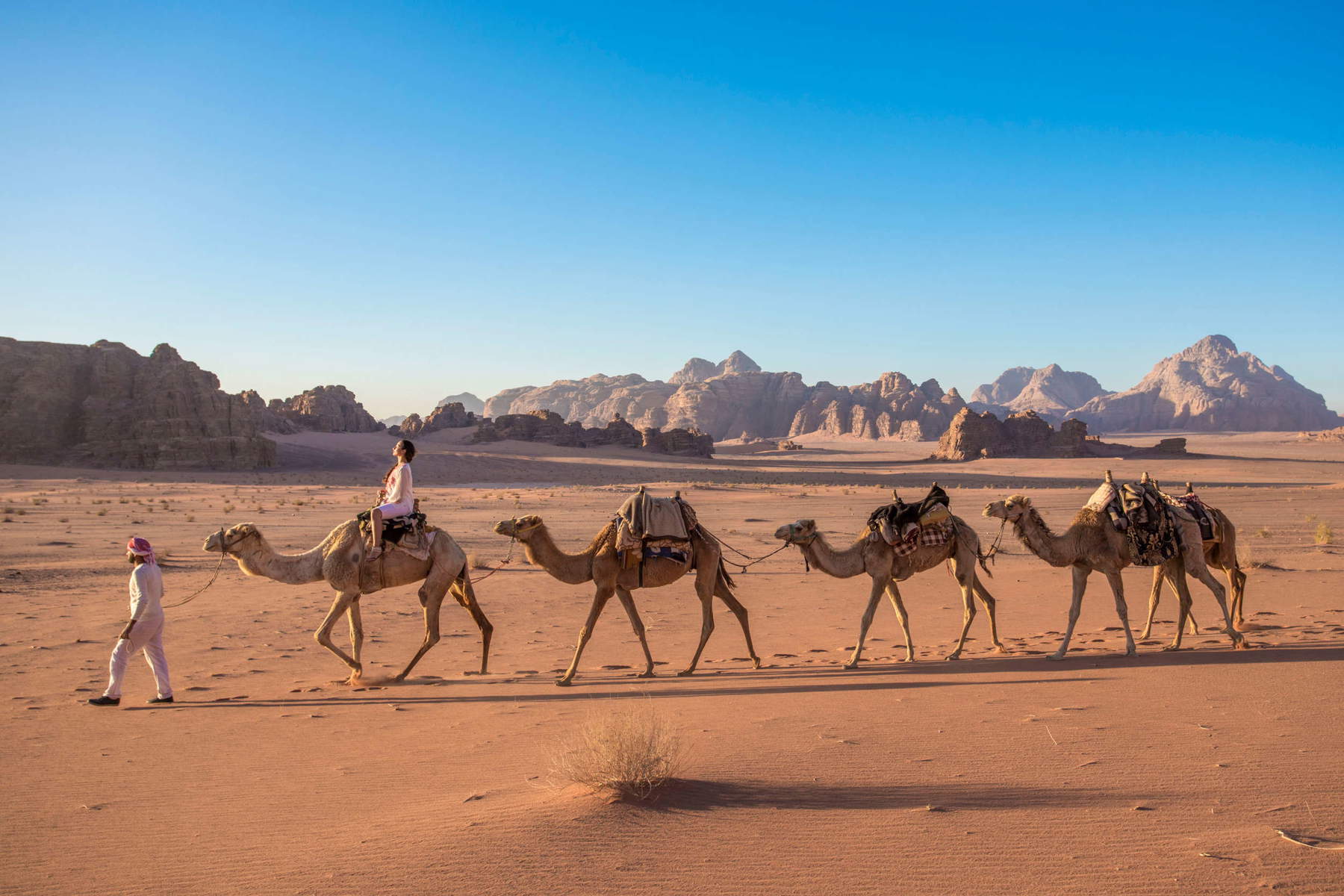
Jordan is connected to Italy by direct flights with Royal Jordanian: in about 3 1/2 hours, taking you from Italy (Rome or Milan) to Amman. Jordan has a time zone of one hour ahead of Italy (GMT +3) when daylight saving time is in effect in Italy. Remember to bring an adapter for English sockets: in Jordan there are three-way sockets like in England, but in some hotels you can also find double sockets similar to ours. Phones pick up everywhere, and Wifi is available in all hotels and almost all restaurants and clubs. Documents: Passport and Visa (it is issued directly at the airport for free).
Onforeign exchange , credit cards , currency: the Jordanian dinar is worth about 1.30 euros. Hotels and most stores accept euros, so there is no need to exchange euros for dollars. You can, once you arrive at Amman airport, exchange euros for dinars at the bank counters there. Or there are many much more convenient exchange points in Amman. Major ATM and credit card circuits are accepted everywhere: Maestro, Mastercard, Visa and American Express.
Temperatureand clothing: temperatures vary greatly between the north and south of the country. In spring, for example, they are about 10-12 °C at night, 20-25 °C during the day in Amman, 20-22 °C / 28-30 °C in Aqaba. It is best to check the weather forecast at https://www.accuweather.com/ before departure. Suggest comfortable shoes for visits to the archaeological sites (especially in Petra, sneakers/trekking shoes are ideal because you will be walking at least 8/10 km between round trips), a hat to cover you from the sun, a warm sweater for nights in the desert, a bathing suit for a swim in the Dead Sea. For women: nothing is forbidden but cleavage, transparencies or legs too much in sight clash with their culture, wanting to know a country is also to respect the customs and habits of the people who live there...best to avoid if we are responsible tourists. Sunscreen always in your bag! The food is great and varied, in Jordan even cooking is an art. If you have a chance go to some home restaurants to eat. For more info, the official website for tourism is visitjordan.com.
 |
| Jordan, a country that smiles at you: hints for an itinerary |
Warning: the translation into English of the original Italian article was created using automatic tools. We undertake to review all articles, but we do not guarantee the total absence of inaccuracies in the translation due to the program. You can find the original by clicking on the ITA button. If you find any mistake,please contact us.